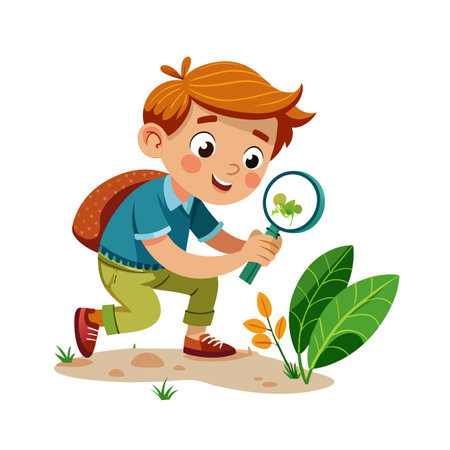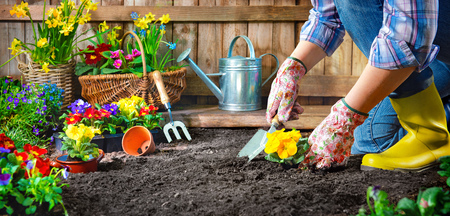Introduction to Indoor Seed Starting for Children
Gardening is a wonderful way for children in the UK to connect with nature, even when the weather outside is less than ideal. Indoor seed starting offers a practical and educational opportunity for young learners to experience the magic of growing plants from scratch. This simple activity not only introduces children to basic gardening skills but also sparks curiosity about the natural world and encourages responsibility. By nurturing seeds indoors, kids can witness each stage of growth up close, from tiny shoots to leafy plants, regardless of the season. Starting seeds inside is especially suited to the UKs often unpredictable climate, allowing families and schools to enjoy gardening projects all year round. Through these hands-on experiences, children develop patience, observation skills, and a sense of accomplishment as they watch their efforts flourish into living greenery.
Essential Tools and Materials
Getting started with indoor seed starting is easier than you might think, especially when working with children in the UK. Many of the tools you need can be found at home or easily sourced from local shops. Choosing child-friendly and safe materials is key to a positive gardening experience. Below, we’ve outlined the essential items that will help make your indoor seed projects both fun and practical.
Child-Friendly Gardening Tools
Children benefit from using tools designed for their smaller hands and safety needs. Look for lightweight, blunt-edged items to avoid accidents. Here’s a quick overview of recommended tools:
| Tool | Why It’s Useful |
|---|---|
| Mini Trowel | Perfect for digging small holes and moving compost without too much mess. |
| Hand Fork | Helps loosen soil gently, suitable for delicate seedlings. |
| Watering Can (with rose) | A child-sized watering can with a gentle spray avoids flooding young seeds. |
| Spray Bottle | Ideal for misting seeds and seedlings without washing them away. |
Household Items That Work Wonders
You don’t always need specialised equipment. Everyday items around your home can be repurposed for indoor gardening, making it budget-friendly and sustainable—a value appreciated in many UK households.
| Household Item | How to Use It |
|---|---|
| Yoghurt Pots or Egg Cartons | Act as biodegradable seed trays—simply poke drainage holes in the bottom. |
| Lolly Sticks or Wooden Spoons | Label plant varieties and keep track of what’s growing where. |
| Plastic Food Containers | Serve as mini-greenhouses when placed over seed trays to retain warmth and moisture. |
Sourcing Seeds and Compost Locally
Many UK supermarkets, garden centres, and even some schools provide seed packets ideal for beginner gardeners. Opt for quick-growing varieties like cress, beans, or sunflowers for faster results that keep children engaged. Peat-free compost is widely available in the UK and is better for the environment, aligning with current British gardening values.
Top Tip
Create a tidy workspace by covering tables with newspaper or an old cloth—easy to clean up and protects your surfaces from spills.

3. Choosing UK-Friendly Seeds
When starting indoor gardening projects with children in the UK, selecting the right seeds is an essential first step. The British climate is often cool and damp, so its important to choose varieties that are well-suited for both indoor environments and later outdoor planting when the weather improves.
Easy-to-Grow Varieties
For beginners, especially young gardeners, opt for seeds that germinate quickly and require minimal care. Peas, cress, radishes, sunflowers, and salad leaves like lettuce or rocket are excellent choices. These seeds generally sprout within a week or two and provide visible progress to keep children engaged and excited about their gardening journey.
Herbs for Indoor Success
Herbs such as basil, chives, mint, and parsley thrive indoors on sunny windowsills and are widely used in British kitchens. Their pleasant scents and fast growth make them a delightful addition to any child’s indoor garden project.
Native and Pollinator-Friendly Plants
Consider introducing native species like wildflowers or bee-friendly plants such as calendula (pot marigold). These not only adapt well to local conditions but also support biodiversity once moved outdoors. Involving children in choosing pollinator-friendly seeds helps teach environmental stewardship from an early age.
By focusing on UK-friendly seeds that suit both the climate and indoor growing conditions, you set up your educational gardening project for success. This thoughtful selection encourages curiosity, responsibility, and a lasting love of nature in young learners.
4. Step-by-Step Seed Starting Activities
Starting seeds indoors is a brilliant way for children to get hands-on with gardening. Here’s a simple guide, tailored for families and schools in the UK, to help little ones grow their own plants from seed. These activities encourage patience, responsibility, and a love for nature.
Sowing Seeds: Easy Steps for Children
- Prepare Containers: Use small pots, recycled yoghurt tubs, or seed trays with drainage holes.
- Add Compost: Fill each container with peat-free seed compost, gently patting it down.
- Sow Seeds: Place one or two seeds on the surface. For smaller seeds, sprinkle lightly. Cover with a thin layer of compost.
- Label: Write the plant name and date on a lollipop stick or label and pop it in the pot.
Watering and Care
- Mist Gently: Use a spray bottle to water, keeping the compost moist but not soggy.
- Warmth and Light: Place pots on a sunny windowsill or under a grow light. Most seeds need warmth (around 18-21°C) to germinate.
- Check Daily: Encourage children to check for signs of growth and keep the soil damp.
Seedling Care Table
| Activity | How Often? | What To Look For |
|---|---|---|
| Misting/Watering | Every 1-2 days | Damp (not wet) compost |
| Turning Pots | Every 2-3 days | Straight-growing seedlings (turn if they lean towards light) |
| Thinning Out | Once seedlings have 2 leaves | Select strongest seedling; remove extras carefully |
| Praise & Observe | Every day! | Cotyledons (first leaves), then true leaves appear |
Top Tips for Success in the UK Climate
- Select suitable seeds: Try cress, sunflowers, beans, or sweet peas – all easy for children and quick to sprout indoors.
- Avoid overwatering: British homes can be cool and damp; too much water may cause mould.
- Create a diary: Let children note changes in their plants – an excellent cross-curricular activity linking science and literacy.
A Memorable Experience
This step-by-step approach makes gardening accessible for all ages. With these activities, children in the UK can watch life unfold from seed to seedling, gaining practical skills and pride in nurturing their own plants indoors.
5. Learning Opportunities and Educational Benefits
Indoor gardening projects offer an abundance of learning opportunities for children across the UK, blending educational value with hands-on fun. Through nurturing seeds into young plants, children naturally explore science concepts, such as plant life cycles, germination, photosynthesis, and the importance of light and water. These practical lessons make abstract classroom topics tangible and memorable.
Science in Action
Observing seeds sprout and grow introduces young gardeners to biology in a real-world context. Children can experiment with different conditions, such as varying sunlight or water levels, encouraging curiosity and investigative thinking. Keeping a gardening diary to record changes in their seedlings helps develop observation skills and an understanding of scientific methods.
Building Responsibility
Caring for indoor plants teaches responsibility and routine. Children learn that consistent care—watering, checking for growth, and ensuring proper light—is essential for healthy plants. This daily involvement fosters patience and a sense of accomplishment when they see the results of their efforts.
Encouraging Creativity
Indoor seed starting also inspires creativity. Youngsters can personalise plant pots with drawings or labels, design their mini-gardens on windowsills, or try growing herbs for use in simple recipes. These activities not only enhance creative thinking but also connect children to British culinary traditions and seasonal eating habits.
Overall, indoor gardening is a wonderful way for children in the UK to develop practical skills while fostering a lifelong appreciation for nature. The blend of science exploration, personal responsibility, and creative expression makes these projects both educational and enjoyable.
6. Involving Families and the Local Community
Engaging families and the wider community is a wonderful way to deepen children’s learning experiences with indoor seed starting projects in the UK. By inviting parents and carers to take part, you not only strengthen home-school connections but also inspire ongoing interest in gardening at home. Here are some practical ideas for fostering these valuable links:
Family Seed Starter Kits
Send children home with simple seed starter kits containing easy-to-grow seeds like cress or sunflower, small pots, compost, and clear instructions. Encourage families to document the growth process together and share photos or updates with the class. This can spark conversations about plant care and encourage healthy eating habits at home.
Gardening Workshops for Parents
Host short after-school workshops where parents can learn about seed starting techniques alongside their children. These sessions could cover topics such as using recycled materials for pots, understanding the UK growing calendar, or tips on keeping seedlings healthy indoors during British weather changes.
Connecting with School Gardening Clubs
If your school has a gardening club, collaborate on indoor seed starting activities. Club members can mentor younger children or help organise events like a “seed swap” day. This builds a sense of teamwork and allows experienced pupils to share their knowledge within the school community.
Partnering with Local Allotments
Reach out to local allotment societies or community gardens – these are popular across the UK and often welcome young gardeners. Arrange visits where children can see larger-scale planting, or invite allotment holders into school to talk about seasonal crops and wildlife-friendly gardening practices.
Seasonal Events and Competitions
Organise seasonal events such as “Spring Seedling Shows” where families display their indoor-grown plants, or friendly competitions for the tallest bean plant or most creative recycled pot. These activities celebrate effort and creativity, making gardening a joyful community affair.
Building Lifelong Connections
By involving families and local groups in children’s gardening projects, you not only enrich educational outcomes but also nurture a love of nature that can last a lifetime. These shared experiences help foster a greener, more connected future for everyone in your community.

